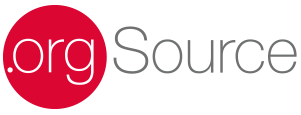You’re Not Understaffed—You’re Operationally Inefficient

Why fixing your workflows matters more than hiring more people
“We just don’t have enough people.”
That’s the default explanation when…
- Projects miss deadlines
- Teams burn out
- Member expectations go unmet
- New ideas never make it off the whiteboard
But what if that’s not actually the problem?
What if your team does have the time—it’s just buried under layers of outdated processes, siloed systems, and workarounds that no one questions anymore?
At .orgSource, we’ve spent years working inside associations, and here’s what we know:
- You don’t need more staff.
- You need more operational clarity.
- And it starts with efficiency by design.
Inefficiency is baked into how most associations work
The truth is that inefficiency doesn’t happen by accident.
It happens when:
- Systems don’t talk to each other
- Teams duplicate effort without realizing it
- Technology is underutilized (or over-bought)
- Processes are built for yesterday’s priorities
- Everyone is doing their best—but no one has time to zoom out and ask, “Why are we doing it this way?”
This isn’t about individual performance. It’s about structural friction.
And every bit of friction compounds over time.
You need to fix your workflows. The cost of inefficiency is bigger than you think.
Let’s put some real consequences around it:
- ⏳ Time wasted chasing down info = slower response to members
- 💸 Budgets bloated by overlapping platforms = missed investment in innovation
- 🤝 Staff drained by inefficiency = disengagement, turnover, and resistance to change
- 🚧 Processes that can’t flex = an organization that can’t pivot
Operational inefficiency doesn’t just hurt your output—it sabotages your ability to evolve.
And in a digital-first world, that’s the difference between staying relevant and becoming replaceable.
Operational efficiency ≠ doing more with less
Let’s be clear.
We’re not advocating for “tighten the belt” tactics that push people to exhaustion.
Efficiency isn’t about squeezing more from your team.
It’s about removing the stuff that shouldn’t be on their plate to begin with.
In a future-ready organization, efficiency means:
- Every system supports your strategy
- Every team understands how their work connects to mission
- Every process is intentional—not inherited
- Every tool actually saves time (not just adds another login)
How do you spot the real inefficiencies?
🚩 Here are a few red flags:
- You use a spreadsheet to manage what your AMS or CRM should be doing
- Every department has their own Dropbox—and no one knows what’s current
- Meeting overload: recurring syncs that lead nowhere
- Reports are pulled manually every time (and no one’s sure what’s accurate)
- Staff are “building their own systems” in tools like Notion, Asana, or even Google Docs because they’re desperate for a better workflow
Sound familiar?
You don’t need another workaround.
You need a reset.
Efficiency starts with transparency
One of the first steps toward operational clarity is visibility.
- What is everyone doing?
- How long does it take?
- How many steps are involved?
- How often are we duplicating effort—or working at odds?
It’s amazing how many inefficiencies are invisible until you map the process.
We’ve seen associations cut dozens of steps from membership renewal journeys just by asking the right questions.
You don’t need six tools for one task.
What you need is a tool that’s aligned and a team that’s empowered to use it well.
Integrated strategy = efficient execution
Want to know a big reason associations stay stuck?
Because their strategy and operations are disconnected.
Planning happens in one silo. Execution happens in another. Technology gets layered on top, but no one’s sure how it all connects.
Here’s how you fix that:
- Build an integrated strategic plan
One that ties goals to team-level actions and tech capabilities.
- Map your systems to that strategy
Every platform should support a clear function—not just look good on paper.
- Flatten communication
Eliminate approval bottlenecks and foster cross-functional collaboration.
- Invest in process design—not just tools
Don’t let the platform dictate the process. Build the process that works for you, then choose the right tech.
This is where operational efficiency becomes a growth engine—not just a cost-saving measure.
Where to start if everything feels inefficient
If your to-do list already feels overwhelming, don’t panic.
Start with one process that’s draining your team’s time.
- Renewal cycles
- Volunteer management
- Onboarding (staff or members)
- Event registration
- Board reporting
Now ask:
- Who owns this?
- How many tools are involved?
- What can be automated?
- What’s being done because “we’ve always done it that way”?
Then take 30 minutes to sketch the current workflow—and a version that would actually make sense.
That’s your blueprint for change.
Want help identifying the gaps?
At .orgSource, we specialize in helping associations uncover and address inefficiencies that are hiding in plain sight.
Here’s how we support you:
- Technology assessments: Are your systems aligned—or just layered?
- Operational audits: We look at workflows, staffing, and structure to identify real bottlenecks
- Integrated strategy facilitation: No more plans that sit on a shelf
- Digital culture coaching: Because efficiency doesn’t happen without behavior change too
If your team is stretched thin but spinning in circles, let’s talk.
You don’t need more hands. You need better flow.
Take the first step to fix your workflows
So, are you ready to start cleaning up your operations?
Here’s how to move forward:
📥 Download the Fast Tracks Guide to Building a Digital Culture
🧪 Take the Future Ready Assessment
📞 Book time with Sherry Budziak
Final thought: You can’t scale chaos
Above all if your foundation is broken, growth will only magnify the cracks.
Operational efficiency isn’t the work you do after the big stuff, it’s what makes the big stuff possible.
Lastly, let’s make your systems as smart as your people.
